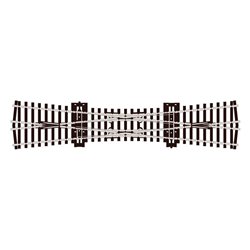Static grass puffer bottles work by manually charging model grass fibres with static electricity. When the charged...
No products
Product successfully added to your shopping cart
There are 0 items in your cart. There is 1 item in your cart.
Search Tips
What is the purpose of check rails and where were they typically used?
Check rails are small additional rails that are installed next to the main running rails on a railway track. They serve a specific purpose in ensuring the smooth operation of trains and preventing derailments.
The primary purpose of check rails is to guide the flanges of a train's wheels and keep them aligned with the main running rails. This is especially important in curves or on sections of track where there is a significant height difference between the rails. By providing an additional guiding surface for the wheels, check rails help to maintain stability and prevent the wheels from riding up and derailing.
Check rails were typically used in situations where ther was a risk of derailment, such as on sharp curves, inclines, or on sections of track with uneven or unstable ground. They are also used in railways points to help ensure the flange on the wheels of a train do not pass on the wrong side of the frog.
Check rails are also to be found on various aspects of railway modelling. They are frequently located on points and serve the same purpose on model railways as they do in the real world, to ensure the correct alignment of a train's wheels and to lessen the chances of a derailment.
Overall, the purpose of checkrails is to enhance the operational reliability and safety of railways by providing additional guidance for the train wheels. They are typically used in situations where there is a higher risk of derailment, and can be particularly beneficial in smaller scales or on more challenging track layouts.
Click here to receive the tips weekly in your mailbox. You can unsubscribe at any time.








